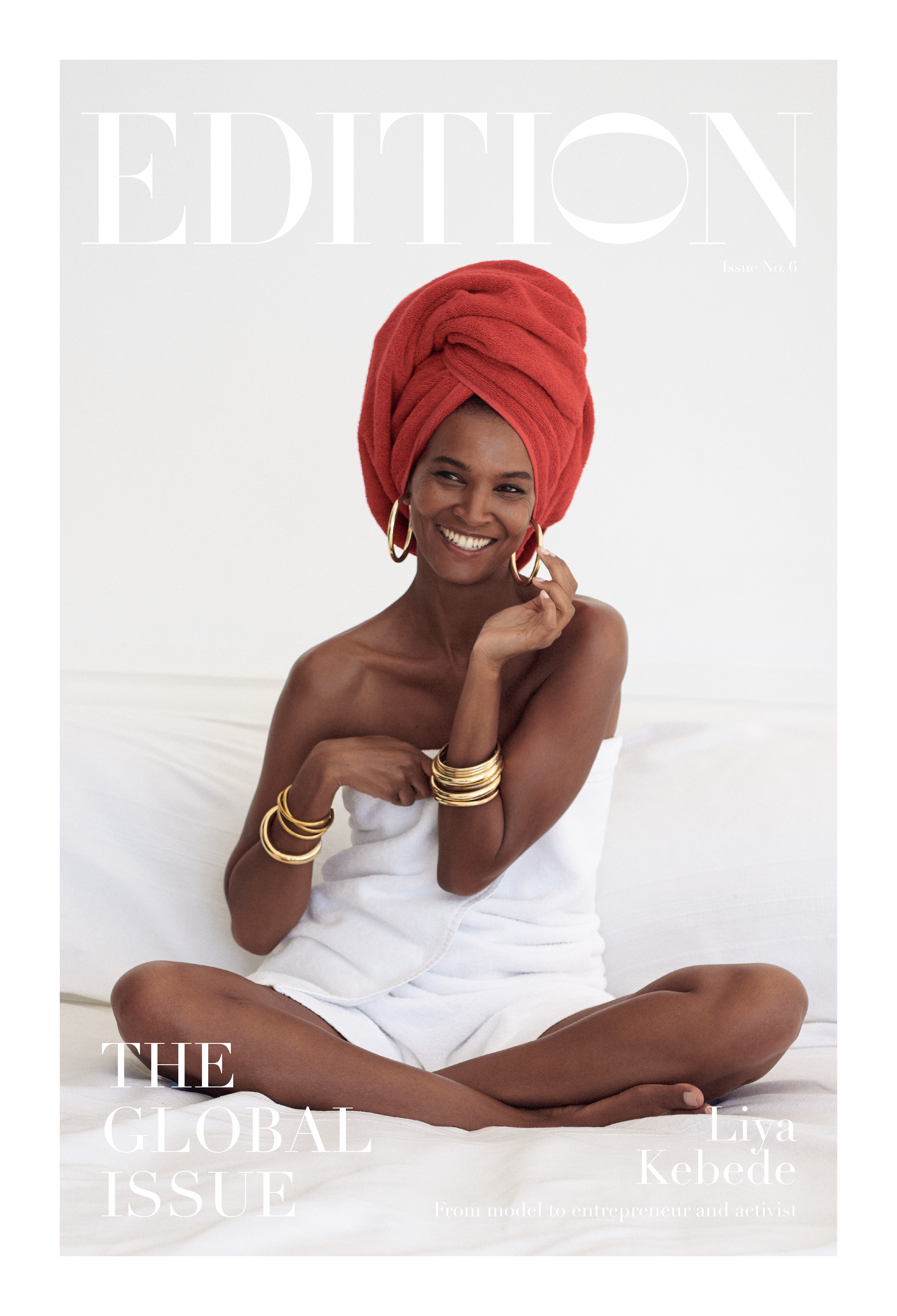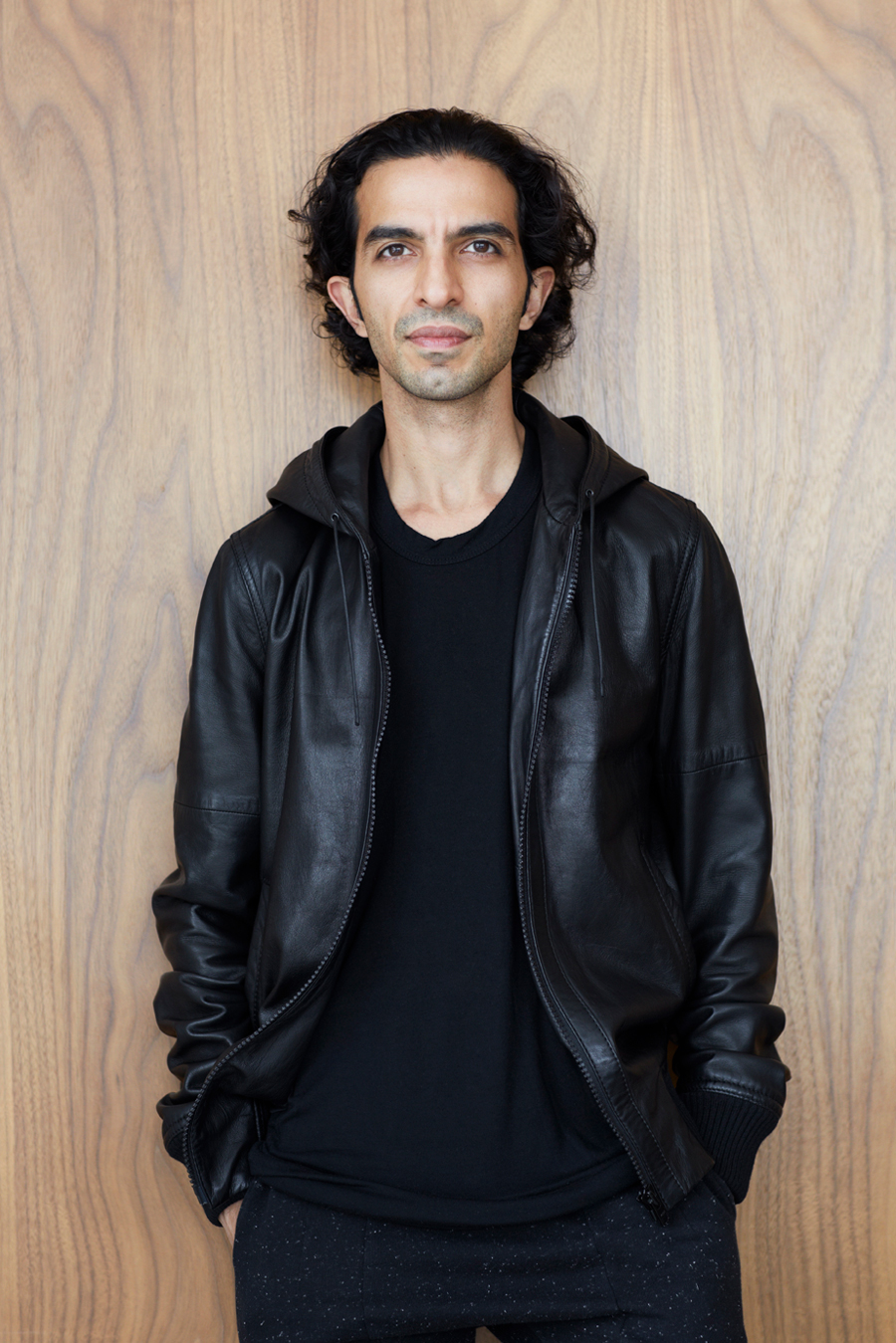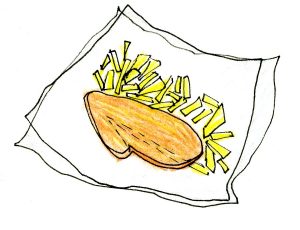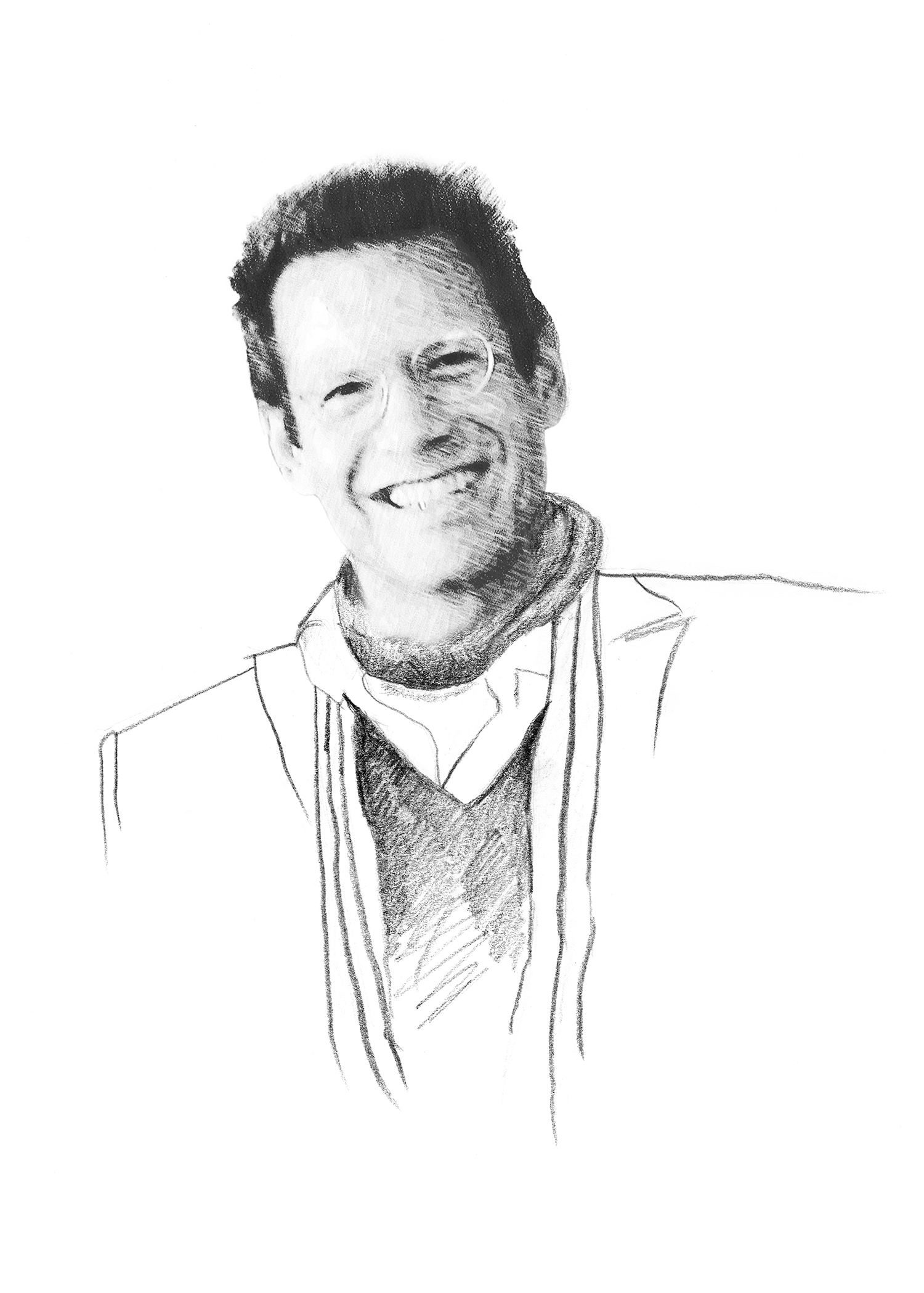
Global Issue
Global Issue: Editor’s Letter
Editor’s Letter
John Fraser
The Michelin-starred chef has a story to tell you through his cooking
Pundy’s Picks for Conscious Travel
Six tips for considered and conscious travel
Genmaicha Martini Recipe
The classic martini plus the health benefits of green tea
The Spread Love Project by Nicholas Konert
How Nicholas Konert’s rainbow heart design became an international icon
Wade Davis
Anthropology is the antidote to today’s nativism says the scholar and author
Carla Sozzani
The future of retail according to the founder of legendary concept store 10 Corso Como
The Art of Migration
The power of art to inspire empathy and social action
John Pawson
Zen Buddhism and minimalist purity drive the celebrated architect
Amy Duncan
As the CBD line Mowellens expands into skincare, its founder shares the personal story behind her company
Sila Sveta
Moscow’s favorite media studio finds the perfect balance between art and commerce
David de Rothschild
In his calls for environmental awareness, the modern explorer finds harmony between man and nature
Can Fashion Be Sustainable?
Shaping a better world through what you buy – or don’t
Brendon Babenzian
Supreme’s former creative director wants to end the cycle of consumption with his new brand Noah
Lily Kwong
Nature invades the urban jungle in the landscape designer’s expansive projects
House of Yes
Behind the scenes with the Bushwick nightlife collective promoting inclusivity and consent culture
Vivie-Ann Bakos
DJ Extraordinaire
Chez Dede
A medium in which two world-traveling, adventurous spirits absorb the globe’s vast curiosities and share them freely
Jesse Israel
A meditation guide for extraordinarily large groups
Liya Kebede
The Ethopian model, activist, and entrepreneur uses her label Lemlem as a force for change

Imran Amed
The Media Pioneer on the Business of Consumption
In just a few years, Imran Amed has transformed from stylish outsider to the ultimate insider. The Canada- born London resident graduated from Harvard Business School and worked as a consultant for McKinsey before quitting to explore a career fashion. He had just been hired to consult for LVMH when he launched his website, The Business of Fashion (BoF), as a blogging side project in 2007. Now, BoF is the most influential and comprehensive daily read about the forces shaping the fashion industry. With marquee writers like legendary personality Tim Blanks on the payroll and a social-media following in the millions, Amed himself has become a front-row fixture at the shows. And when it comes to fashion’s future, his access to the top creative minds and executives in the business gives him broader perspective than most. At a moment when fashion occupies a more prominent role than ever in the cultural conversation—and in the global economy—Amed shares his thoughts on where it’s heading.
How is fashion evolving right now?
The main driver of change is technology, of course—it’s not just changing the fashion world, it’s changing the world. We’re in the midst of one of the greatest shifts in history in the same way that the industrial revolution and the arrival of the printing press completely changed the way the world operated. And we’re only, say, 25 years into this digital revolution.
Clearly, technology has changed fashion.
It has been changing the way we consume fashion for the better part of a decade now. The retail and online channels are converging because people have these really powerful devices. A typical brand awareness journey before was that you read about something in a magazine and you went to a brick and mortar store and purchased it. Now, the first place you’re going to learn about a product is on your phone. People have information from all over the world in the palm of their hands.
How will technology evolve? Will we be watching shows in 3-D on our phones?
I think it’s actually more simple than that. Video and audio are really interesting ways of consuming information. I can imagine podcasts and those kind of things, where you can add a layer of consumption to life—if you’re taking a run, or in the car, or just hanging out in bed. “Listening” is an interesting way of disseminating content now, particularly [in regards to] debates or discussions. So I think we may see more of that in fashion. It’s something that we’re thinking about at BoF.
Has technology changed the fashion landscape in favor of corporate brands with more resources to spend on digital marketing?
I actually think there’s even more opportunity for independent brands now. The consumer is looking for something special. With some of the big megabrands out there, the products and the things they’re offering are basically the same things everywhere. I think there’s a whole consumer base that’s not that into that. As an independent brand, because of the availability of inexpensive technology, you can actually reach an audience online. The go-to-market strategy can be completely facilitated by technology. Where I do feel there’s a problem with independent brands is that there’s so many of them. There’s so much noise.
Many in the industry would agree with that.
We’re experiencing fashion fatigue. I feel there are too many products, too many collections, too many brands. In terms of the volume of stuff produced, I find myself questioning whether we need that much stuff. On the other hand, with the pace, I’m not expecting that to go down. I interviewed Karl Lagerfelded last year about his pace: He kind of sees fashion as a sport. That it’s just the reality and there’s no point in questioning it.
The recent departures of Raf Simons, Alber Elbaz, and Alexander Wang from their respective posts at Dior, Lanvin, and Balenciaga might seem to suggest that things are moving too fast.
It can be easy for people to get whipped up into a frenzy because there have been a few important announcements about people leaving their brands. First of all, it’s important to keep it in perspective. It was Raf’s departure that really raised the issue of the pace of fashion. Alber and Alexander left their posts for very different reasons.
Clearly there are some questions around the fashion system and whether all the collections that are being produced are really sustainable. Not just from kind of an environmental or ethical standpoint, but also from a creative standpoint. Creative people, as with any other people and maybe more so than other disciplines, need space and time to create. And if you’ve gone from creating two collections a year 15 years ago to four or six now, is it really reasonable to expect they’re going to be able to deliver the same level of creativity? I don’t claim to have the answers to those questions, but I think Raf’s departure from Dior brought them into stark relief. He found, from what I understand, the system to be not necessarily compatible with his own creative process, forcing him to make personal sacrifices that he was no longer prepared to make. I thought it was quite courageous for him to step away from this role. It showed a level of character and self-awareness that you don’t see in our industry, where everyone’s concerned about status and position and fame and power.
Back to the idea of ‘sustainable.’ What’s your take on the movement toward more sustainable practices in the industry?
Literally, people’s wardrobes are bursting. I think the broader discussion around climate change, ethics, and workers’ rights is beginning to change the way people consume. But at the end of the day, I don’t think it’s the main driver of a decision. You still have to be creating desirable products. But if those desirable products can be improved or elevated by having a set of values that consumers appreciate, then it becomes an element of the purchasing decision.
Will people ever be convinced to buy fewer things?
I think in certain markets, yes, absolutely. You can see the rise of vintage, for example, when people want something made really well and would rather have a few nice pieces than an endless supply of disposable products. But sadly, in certain parts of the world in the consumption hierarchy, that’s not the case. At Primark you can go and buy a handbag for five dollars and you have no idea how it’s made, but people just want to buy more.
How do you stay sane in such a rapidly changing world?
It’s hard for me to take extended vacations, but I can take a few days here and there, and I try to do a digital detox once a year when I literally unplug and disconnect. Last year I did it for almost 10 days. It was done by force—I was in the Andaman Islands and there was no internet service there. I felt a bit twitchy the first few days, but after a while I felt more creative. It was like 1999. I enjoyed it so much that I’m going to try to implement it again this year.



Art World Predictions
Art & Culture
The power of art to inspire empathy and social action
Zen Buddhism and minimalist purity drive the celebrated architect
Moscow’s favorite media studio finds the perfect balance between art and commerce
Behind the scenes with the Bushwick nightlife collective promoting inclusivity and consent culture
DJ Extraordinaire
A medium in which two world-traveling, adventurous spirits absorb the globe’s vast curiosities and share them freely
A meditation guide for extraordinarily large groups
Experiences
Moscow’s favorite media studio finds the perfect balance between art and commerce
In his calls for environmental awareness, the modern explorer finds harmony between man and nature
Behind the scenes with the Bushwick nightlife collective promoting inclusivity and consent culture
DJ Extraordinaire
Food & Drink
The Michelin-starred chef has a story to tell you through his cooking
Six tips for considered and conscious travel
Personalities
Style
The classic martini plus the health benefits of green tea
How Nicholas Konert’s rainbow heart design became an international icon
As the CBD line Mowellens expands into skincare, its founder shares the personal story behind her company
Nature invades the urban jungle in the landscape designer’s expansive projects
The Ethopian model, activist, and entrepreneur uses her label Lemlem as a force for change

